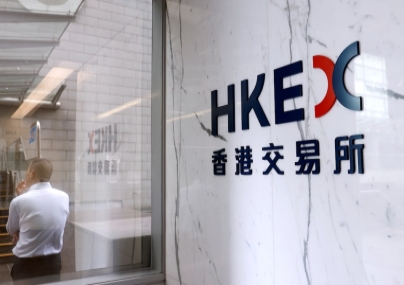
在交易类项目缩减的情况下,过去两年,争议解决某种程度上“重返”业务舞台中心,在律所营收中扮演愈发重要的角色。虽然业务持续繁忙,争议解决律师却坦言,他们正面对客户需求的不断变化,以及技术更新、行业发展带来的全新挑战。
后疫情时代,社会、经济秩序逐渐恢复正常,但争议解决领域仍在处理着疫情三年非常态时期所遗留下的伤疤。
2023年和2024年迄今,中国的纠纷数量持续上升。2023年,全国法院收案超过4557万件,增长15.62%;全国279家仲裁机构办理案件数量和标的都创历史新高——案件量超60万件,标的额为1.16万亿元。
这样的趋势也延续到了2024年:根据最高人民法院数据,今年第一季度,全国法院受案量超1100万件,同比上涨约1.5%。
在体感上,争议解决律师感受到的就是异常、持续的繁忙。“受疫情影响的经济疤痕效应明显。投资行为频率、金额、收益下降,无法正向获利退出,伴随经济发展不稳定,这些都成为了冲突、争议的导火索,导致投资类合同、金融类借贷、公司股东、劳动争议纠纷显著增加。”广信君达律师事务所高级合伙人梁沐周律师说。
此外,“在监管部门严打证券类犯罪案件和企业反舞弊得到高度重视的背景下,涉及资本市场犯罪、职务廉洁类、欺诈类犯罪案件也在增加”。
案件量客观增长带来的繁忙外,争议解决律师的忙碌也受制于其他因素。尤其“客户诉讼意愿、付费能力下降,律师竞争加剧,争议解决机构程序要求不断加码,律师的时间被大量的程序性、事务性工作占据,沟通效率大打折扣,也导致越来越忙”,梁律师坦言。
对此,青狮云岸律师事务所主任罗锦荣律师也感触颇深。“伴随客单价下降,想要维持原有的业绩规模,案件数量必然要上升。与此同时,现在案件周期越来越长,导致前几年的案件还在滚动,但为了完成今年度创收,新业务持续进来,同时期在办案件叠加数量更高。”
具体到较为集中的案件类型,罗律师观察到三类:“第一类与资金融通相关,例如借款、投资后的回购类案件;第二类和国内或国际贸易相关,有些情况下,一家企业一旦出现资金链断裂等情况,就可能导致上下游多重违约。”
“第三是地产类纠纷,包括境内外债权人与开发商的诉讼、施工方与开发商的诉讼以及购房者和开发商之间的纠纷等等。这三类纠纷也比较清晰地反映了现阶段的整体经济形势和内外部环境。”
案件量的增长也给纠纷处理机构,尤其法院,带来了更多压力。在罗律师看来,这也对律师提出了更高的要求。
“法院人均办案数量提升,对于法官处理案件的效率提出了更高的要求,所以我们律师也必须让法律文书更加精准、简练,让庭审表达更加直接、准确,让法官在最短时间内了解案件的关键事实以及我们的观点。”
在此背景下,律师需要更好地帮助客户管理诉讼预期。罗律师坦言:“我们在前期和客户沟通时,就会把目前法院的审理方式、思路、更注重书面证据材料的偏好等告知客户,并充分披露诉讼过程中的风险,帮助客户做好预期管理。”
客户需求变化
除了预期管理,在变化的经济环境中,争议解决律师还需应对客户其他方面的变化。
最明显的就是企业客户争议解决预算的降低。梁沐周律师说:“受到经济不稳定和成本增加的影响,作为后台部门的法务部门,其预算大幅度下调已经成为普遍现象。此外,法务委托律师程序更复杂、时间更长,对比选择也更明显。”
“考虑到诉讼成本和效果,企业的诉讼意愿出现明显下降,导致许多案件客户不愿意诉讼,或者不愿意承担任何前期诉讼成本。”即便最终决定委任,“对委托律师争议解决的时限性、服务费用、裁判结果要求更为严苛”。
罗锦荣律师则告诉ALB:“现在客户的诉讼预算做得越来越细,部分法务部门会要求律师对费用进行反复测算,不仅包括律师费,还要测算可能产生的诉讼、仲裁费;可能涉及的保全成本;以及其他可能导致费用增加的情况,有时甚至要求律师预估项目的差旅费。”
第二个变化,在于越来越多法务部门将纠纷收归为内部处理。“法务部门自己处理纠纷逐渐成为趋势。有些客户会付费请律师为案件提供咨询性建议,但剩下的工作全部由法务部门完成,这样成本最低。我们甚至看到有些企业新设诉讼管理岗法务,专职处理企业的争议解决。”罗律师说。
“某些金融机构已经实现了95%的争议案件内部消化。”梁律师补充道,“这些现象势必会对律师行业带来巨大冲击,同时也为我们提出如下思考:律师行业服务模式和付费逻辑应如何变化;成本与效率如何有效协同;行业是否会出现兼并现象等等。”
另一重变化,则在于企业越来越难以承受纠纷带来的负累,在解决争议的策略上,对谈判、协商抱有更大预期。罗律师告诉ALB,例如他和团队曾代表当事人在仲裁机构通过谈判促进方式解决纠纷,也曾见证企业从业务层面寻找新的合作机会、以化解双方当下矛盾的情况。
“以和解或调整方式化解纠纷的情况在房地产领域尤其普遍。”他说,“例如在近期代理的一项大型纠纷中,债权人按照合同约定可以获得较高利益,但案件涉及的房地产项目本身现金流枯竭,如果中止项目、展开诉讼,双方利益受损更大。最终大家选择回归目前市场环境下的合理预期,继续将项目进展下去。”
这样的环境对于争议解决律师的商业思考能力要求更高。“诉讼最终服务于商业目的,法律只是商业决策过程中的一种手段。能够站在商业视角、为客户全盘考量,这是商事争议解决律师的应有之义,也是我们的最大竞争力。”罗律师说。
涉外争议增加
广信君达总部位于广州,青狮云岸总部设于深圳,都是中国对外交往最为活跃的地区。与此同时,伴随中国企业疫情后“出海”热情高涨,两位律师都观察到了涉外争议解决服务需求的增长。
梁沐周律师告诉ALB:“随着疫情后跨境交易逐渐恢复,随之而来的争议解决需求出现井喷现象。”2023年,仅广东省法院合计审结涉外涉港澳民商事一审案件就达1.9万件,全国范围内此类案件则预计超过5万件,“涉外服务,中国律师大有可为”。
主体涉外、合同涉外等传统类型的涉外案件之外,另一类增长显著的,是中国企业“出海”过程中在境外遇到纠纷时所产生的服务需求。
梁律师观察到,这类需求越来越呈现出几大特点:“一是行业高度集中,商事方面主要集中在新能源、高端智造、基础设施建设行业;二是国有资本领衔,中国企业‘走出去’的担当主体高度聚焦在国有资本,也为我们选择客户牟定了方向;三是投资的热点集中,我涉外争议纠纷会在中东、非洲、拉美、东南亚等区域出现新的增长。”
罗锦荣律师指出,这类案件通常适用境外法,中国律师从实体法角度较难介入,但实际上在案件项目中也扮演着举足轻重的角色。“中国律师是沟通客户和外国律师的桥梁,这要求我们也去充分了解案件程序、实体法情况,以便和客户展开交流。”
“其次,我们会为外国律师提供国内证据搜集、固定等协助;此外,有时中国律师会担当整个项目的管理者,负责聘用境外律师等等。律师是专业服务者,需要长期合作才能和客户建立信任关系,所以客户希望我们能在境外诉讼中把关、协助判断外国律师的建议是否妥当等,陪伴客户参与整个过程。”
基于客户日益增长的需求,梁律师说,目前各类机构对于涉外法律人才都是“求贤若渴,司法机关高度重视涉外人才培养,律所则对相关人才展开白热化抢夺”。未来,伴随此类人才得以施展的国际空间愈发增大,他认为最大的挑战在于对不同的法院、仲裁、商事调解中心等机构,律师都要“熟悉其运行机制,能够做出利弊分析,这是新的考验”。
行业发展趋势
谈到下一步争议解决业务的发展趋势,梁沐周律师认为,宏观环境对行业的重塑还将继续强化:“客户选择争议解决律师时,对行业服务经验、专业素质、成功案例以及其他赋能要求显著增加,对律师进行比选、比价的标准显著上升,经验丰富、综合实力强而费用更为实惠的律师将成为普遍选择。”
与此同时,新型“法律服务公司”带来的挑战也不容小觑。“借助高效、全面的推广品宣和强大的营销体系,法律服务公司介入传统法律服务行业赛道,对司法行政监管、律师行业规范,以及律所传统的管理方式构成巨大挑战。大量律师精英选择跳上法律服务公司的快速列车,行业内卷趋势更加明显。”他观察到。
科技,尤其人工智能的快速发展也值得留意,工具对效率的倍速提升将助力年轻一代争议解决律师快速超越前辈。此外,人工智能思维已延展到司法系统,罗锦荣律师告诉ALB,部分法院已经很早开始推行“要素式审判”,即特定案件无需提交复杂的起诉状等文件,只需按照要求填写表格,法院即按照这些要素和证据审理案件。
当然,挑战之外,争议解决律师可以利用的工具、策略也更丰富了。“除了诉讼、仲裁,现在又出现了商事调解、协商等手段,丰富了争议解决的方式和路径。”梁律师说。
对此,罗律师特别建议道:“律师要学会多元化的争议解决思路,不要只聚焦于法院或者头部仲裁机构,目前中国有两百多家仲裁机构,仲裁机构之间发展严重不均衡,也发展了各类调解机构,需要充分利用这样的机会,把视角打开,尝试不同渠道,才能让纠纷得到更快解决。当然,在此过程中也要寻找适当的谈判和解契机。”
“律师需要引导当事人,在适当的时机做出正确的选择。我们的最终目的是‘案结事了、解决争议’,我认为至少在未来两三年的经济周期之下,当事人注重谈判和解,仍将是一大趋势。”他说。
AN EVOLVING SCENE
The shrinking of transactional work stands in contrast to the "return" of dispute resolution to the centre of the business of law firms in the past two years. Although business continues to be brisk, dispute resolution lawyers admit that they are facing changing client demands as well as new challenges brought about by technological advancements and industry development.
While the social and economic order has gradually returned to normal post-pandemic, law firms’ dispute resolution practices are still reeling from the scars left by the three-year period.
China witnessed a continuous rise in the number of disputes in 2023, and this has persisted so far in 2024. In 2023, courts across the country accepted over 45.57 million cases, up 15.62 percent, while both the number and the subject matter value of cases handled by the 279 arbitration institutions across the country reached record highs.
This trend has continued into 2024. According to data from the Supreme People's Court, in the first quarter of this year, courts across China accepted over 11 million cases, a year-on-year increase of approximately 1.5 percent.
Against this backdrop, dispute resolution lawyers are experiencing an unusual and sustained level of busyness. "The economic scars left by the pandemic are obvious. The frequency, amount and returns of investment have all declined, and investors are unable to exit their investments profitably. Along with unstable economic development, these have become triggers of conflicts, leading to a significant increase in disputes over investment contracts, financial lending, corporate shareholding and labor matters," says Liang Muzhou, senior partner of ETR Law Firm.
Apart from the increase in caseload, other factors have also contributed to the busy schedules of dispute resolution lawyers. In particular, "with the decline in the willingness of clients to litigate and their ability to pay legal fees, intensifying competition among lawyers, and continuous increase in the procedural requirements of dispute resolution institutions, lawyers have been preoccupied by a large volume of procedural and administrative work, greatly affecting communication efficiency, which has also led to us becoming ever busier," says Liang.
Luo Jinrong, director of King & Win Law Firm, cannot agree more. "As unit price per client drops, if we want to maintain existing performance, we have to increase the number of cases we take on. At the same time, the cycle of each case is getting longer and longer, and many cases from previous years are still ongoing. However, in order to hit this year's revenue target, we have to work on new cases that come in. So the total number of cases ongoing during the same period is becoming even larger."
Luo notices three most common categories of cases. "The first category is related to fund flow, such as lending and post-investment repurchase. The second category is related to domestic or international trade. In some circumstances, once the capital chain of an enterprise is broken, it may lead to defaults at multiple layers."
"The third category concerns real estate disputes, such as project financing disputes, including domestic guarantee lawsuits upon maturity of US dollar bonds, lawsuits filed by domestic financial institutions against developers, disputes between home buyers and developers, etc. These three categories of disputes also fairly clearly reflect the overall economic situation and internal and external environment at the moment."
The increase in caseload puts pressure not only on lawyers, but also on dispute resolution institutions, especially the courts. In Luo's view, this also sets higher standards for lawyers.
"The increase in the number of cases handled per judge demands greater efficiency in case processing, so we lawyers must also make legal documents more precise and concise, and make court expressions more direct and accurate, allowing judges to understand the key facts of the case and our points of view in the shortest possible time."
Furthermore, lawyers need to better help clients manage litigation expectations. "When we communicate with clients in the early stage, we will inform them of the court's current hearing methods, thinking directions, preferences for written evidence, etc., and fully disclose risks in the litigation process to help clients manage their expectations," he says.
CHANGING CLIENT DEMANDS
In addition to managing expectations, dispute resolution lawyers also need to respond to changes of clients in other aspects amid the evolving economic environment.
The most obvious change is the reduction in budgets of corporate clients. According to Liang: "affected by economic instability and rising costs, it has become common for in-house departments to make significant budget cuts."
"Considering the cost and effect of litigation, companies have become much less willing to litigate. As a result, in many cases, clients are either unwilling to litigate or unwilling to bear any preliminary litigation cost." Even if external lawyer appointment is finally decided, requirements are now more stringent in terms of the appointment period of the external lawyer for dispute resolution, his/her fees and dispute resolution outcomes."
"Nowadays, clients' litigation budgets are becoming more and more detailed,” echoes Luo, “An in-house department will require lawyers to repeatedly calculate fees, including not only lawyers’ fees, but also possible litigation and arbitration fees, potential costs for taking preservation measures, and other circumstances that may result in increased expenses. Sometimes even to estimate travel expenses."
The second change is that an increasing number of in-house departments are handling disputes internally. "It has gradually become a trend. Some clients will pay external lawyers to provide advice on cases, but handle the rest of the work internally, which will incur the lowest cost. We have even seen some companies recruiting specialized litigation management roles which are dedicated to handling corporate dispute resolution," says Luo.
"Some financial institutions are already able to handle 95 percent of disputes in-house," adds Liang, "These developments are bound to have a huge impact on the legal industry."
Another change is that companies now have greater expectations for negotiation in terms of dispute resolution strategies. Luo shares that he and his team have represented clients before arbitration institutions to resolve disputes through negotiation and facilitation, and have also witnessed how some companies attempted to resolve existing conflicts by looking for new cooperation opportunities at the business level.
Such an environment places higher requirements on the business acumen of dispute resolution lawyers. "Litigation ultimately serves commercial purposes, and law is just a means for business decision-making. Being able to consider the big picture for clients from a commercial perspective is what commercial dispute resolution lawyers should do. It is also our greatest competitive edge," says Luo.
INCREASE IN CROSS-BORDER DISPUTES
Guangzhou where ETR Law Firm is headquartered, and Shenzhen where King & Win Law Firm is based, are both places in China with the most active exchanges with foreign parties. At the same time, as Chinese companies have become more enthusiastic about "going global" after the pandemic, both lawyers have noticed increasing demand for cross-border dispute resolution services.
According to Liang: "As cross-border deal-making gradually resumes post-pandemic, the demand for dispute resolution services has exploded." In 2023, courts in Guangdong Province alone closed up to 19,000 first-instance civil and commercial cases involving foreign, Hong Kong and Macau elements, and the number of such cases is estimated to exceed 50,000 nationwide.
Apart from the traditional types of cross-border cases such as those involving foreign parties or cross-border contracts, another category that has seen significant growth is the service demand generated by Chinese companies when they encounter disputes overseas in the journey of "going global".
Liang says that this type of service demand is increasingly shaped by the following key characteristics. "First, commercial disputes mainly happen in new energy, high-end smart manufacturing and infrastructure construction industries. Second, most Chinese enterprises that are venturing overseas have State-owned capital, which sets the tone for us in targeting clients. Third, with some investment destinations being very popular, we expect cross-border disputes to see new growth in regions such as the Middle East, Africa, Latin America and Southeast Asia."
Luo points out that as such cases usually apply foreign law, it is difficult for Chinese lawyers to intervene in terms of substantive law, but they in fact play a pivotal role in the process. "Chinese lawyers act as the bridge between clients and foreign lawyers, and we provide foreign lawyers with assistance such as collecting and preserving domestic evidence.”
“Furthermore, sometimes Chinese lawyers serve as managers of entire case projects, be responsible for engaging foreign lawyers, etc. Clients expect us to act as quality controls in overseas litigation, help assess whether advice given by foreign lawyers is appropriate, and support clients throughout the entire process."
As client needs continue to grow, Liang says that various institutions are currently "thirsty for cross-border legal talents. Judicial organs attach great importance to the cultivation of cross-border talents, and law firms are fiercely competing for them."
FUTURE TRENDS
Speaking of the development trends of dispute resolution practice, Liang believes that the macro environment will continue to reshape the industry. "When clients choose dispute resolution lawyers, they now have considerably higher requirements on industry service experience, professional competency, track record and other enabling qualities. Lawyers with rich experience, strong comprehensive strength and more affordable fees will become the preferred choice."
Meanwhile, the challenges posed by the new type of legal consultant companies cannot be underestimated. "By means of efficient promotion and a strong marketing system, legal consultant companies have entered the traditional legal services industry. A large number of elite lawyers have chosen to jump to such companies, making industry competition even fiercer," notes Liang.
The rapid development of technology, especially artificial intelligence, is also worth paying attention to. In fact, AI thinking has already been extended to the judicial system. Luo shares that some courts have long begun to roll out "element-based hearing" where for specific types of cases, parties only need to fill out a form without the need to submit documents such as complaints and the courts can enter judgments based on the information filled out in the form.
Certainly, apart from challenges, the tools and strategies available have also increased. "In addition to litigation and arbitration, commercial mediation, negotiation and other means have now emerged, making available more methods and paths for resolving disputes," says Liang.
In this regard, "lawyers should not just file cases in courts or leading arbitration institutions. At present, the development of hundreds of arbitration institutions in China is seriously uneven, and lawyers need to make full use of this opportunity to broaden their horizon and try different channels so as to resolve disputes faster," advises Luo.
"Lawyers need to guide clients to make the right choice at the right time. Our ultimate goal is to 'close the case and resolve the dispute'. I believe at least under the economic cycle in the next two to three years, it will remain a big trend for parties to focus on negotiation and settlement," says Liang.


